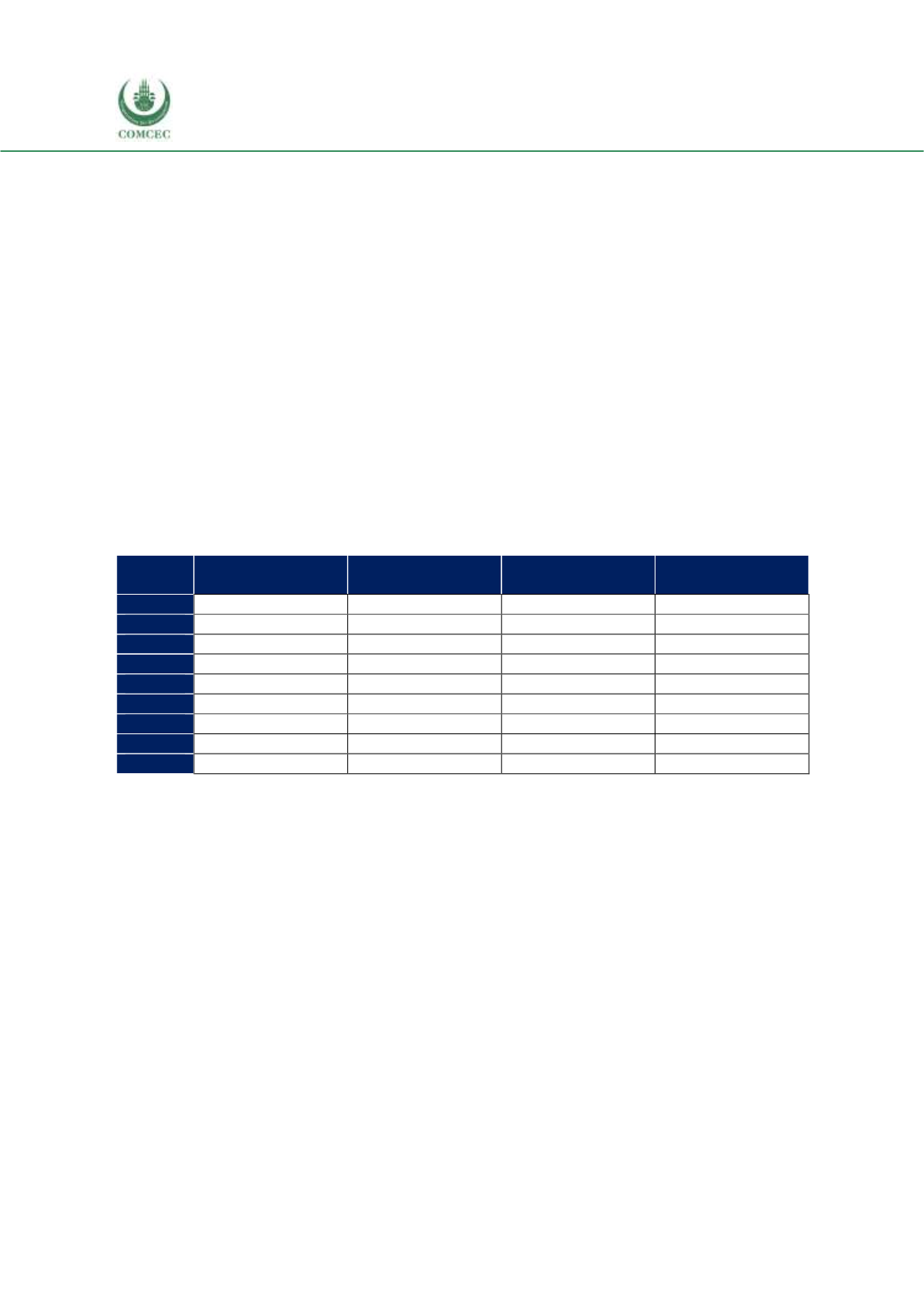

Reviewing Agricultural Trade Policies
To Promote Intra-OIC Agricultural Trade
108
4.3. The Gambia
The Gambia, officially known as the Republic of the Gambia, is located in Western Africa and
surrounded by Senegal, with only 60 kilometers of coastline on the Atlantic Ocean. The country
is essentially a 480 km long narrow strip of land. The Gambia is one of the smallest West African
countries with a predominantly drought Shelia shrub-land ecology. Around 56%of the country’s
total land is suitable for agricultural production. The land is mostly used for cereal and
groundnut production as well as for grazing and fallow. Endowed with considerable water
resources, the Gambia is considered as one of world’s richest fishing zones. The Gambian river
is 480 km in length, and bisects the country into two sections (The Republic of the Gambia,
2017).
The country’s GDP is 1.01 billion USD at the 2017 official exchange rate and per capita gross
national income of 450 USD in 2017 (Word Bank, 2018a). The Gambia ranks 176
th
in GDP and
62th in real growth rate among a total of 230 countries. The country is considered to be one of
the poorest in the world. The Gambia ranks as 174 out of 189 countries across the globe with
regards to human development index (HDI) (UNDP, 2018). 39% of the population live in
extreme poverty and mostly depend on agriculture. There is rising inequality, particularly in the
rural areas as well as increased poverty among female households.
Table 4. 26 Share of Agriculture in GDP, Employment and Trade, Gambia
Year
% share in GDP
% share in
employment
% share in
exports
% share in
imports
2008
25.2
32.6
51.0
28.1
2009
26.2
32.6
69.2
34.2
2010
29.0
32.8
68.5
36.1
2011
18.9
31.3
62.9
37.2
2012
20.3
30.5
57.1
37.0
2013
18.9
29.8
55.0
37.6
2014
17.4
28.7
55.4
37.1
2015
17.3
28.4
92.0
35.2
2016
17.0
27.2
83.1
32.7
Source: CEPII BACI, Eurostat RAMON, World Bank, UN Comtrade, UN Trade Statistics, and authors’
calculations
Malnutrition and food deficit as well as low production and low productivity in agricultural
sector has been significant problems throughout the years. Absence of distribution of adequate
water and use of traditionally low technologies in agricultural production augments low
productivity, leading to a vicious circle of poverty and malnutrition. 71% of the population and
57.2% of the urban population lives under 1.25 USD/person/day. Poor infrastructure, lack of
access to finance, marketing constraints, missing markets throughout the agricultural value
chain are limiting factors for sound agribusiness development (African Development Bank,
2017).
In the Gambia, the rate of economic growth was 6.5% in 2010 and 3.5% in 2017 and inflation
rate was 7.0% in 2010 and 10.8 in 2017. The country’s economy relies on services, particularly
tourism. The sectoral distribution of GDP in 2017 is 20.4%, 14.2% and 65.4% for agriculture,
industry and services, respectively (CIA, 2018).
Table 4.26 shows the relative importance of agriculture in the Gambia for the period between
2008 and 2016. The figures show that the share of agriculture in GDP and employment has
declined during the 2008-2016 period while the share of agriculture in exports increased by


















